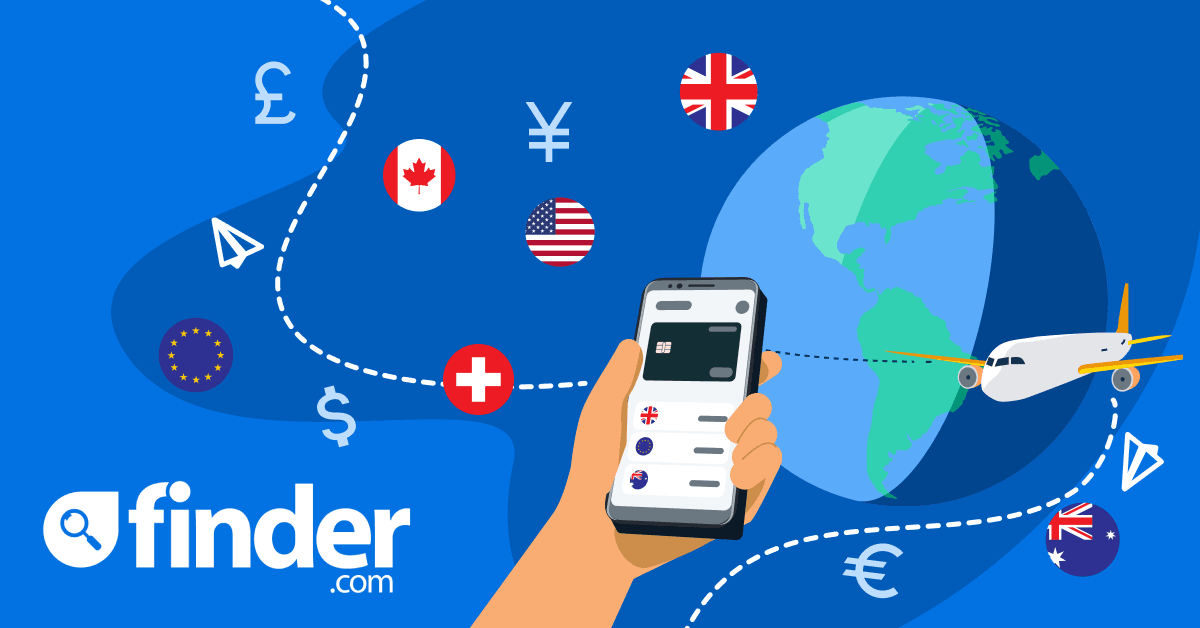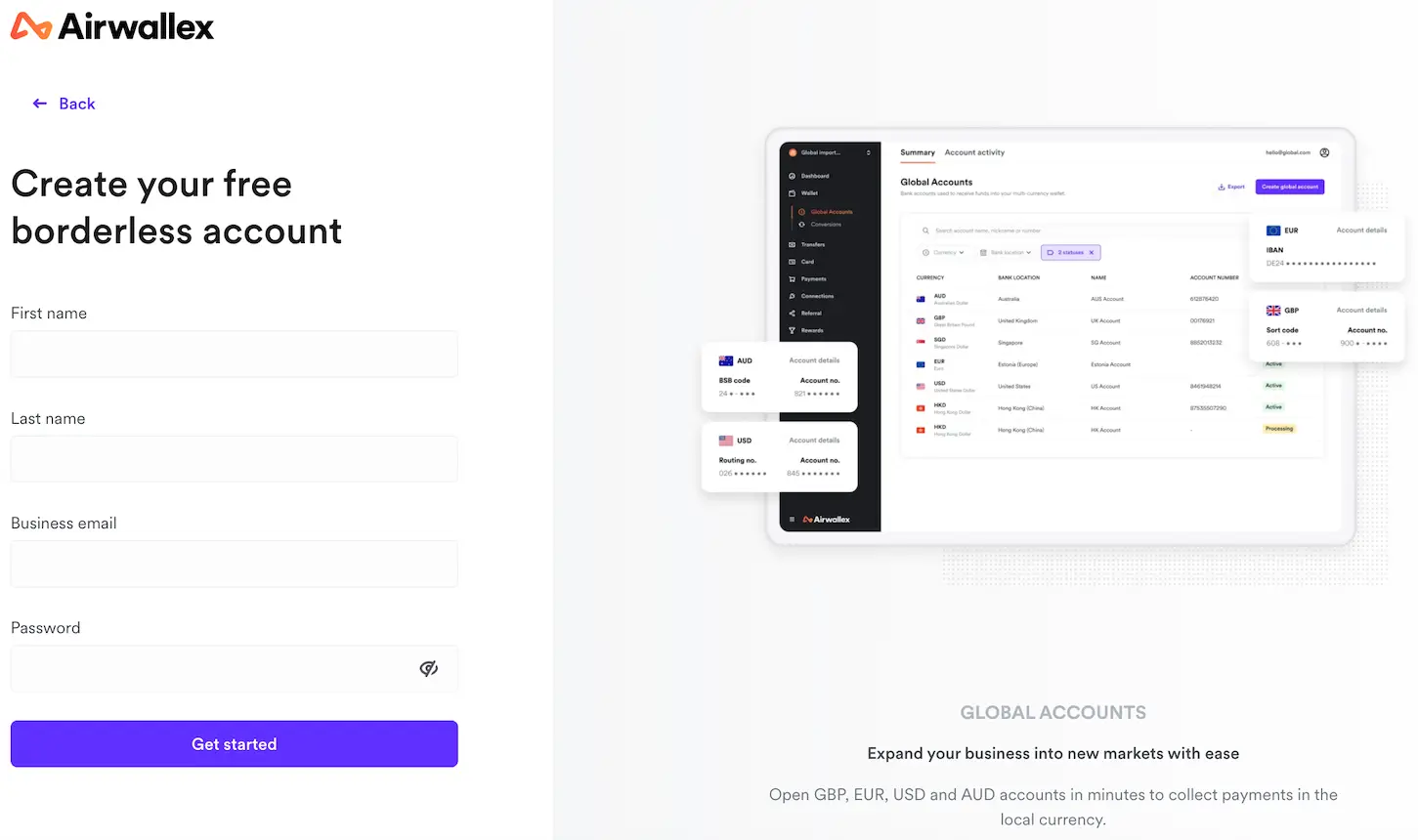
If you’re a UK business with customers or suppliers abroad, using an account that can handle multiple currencies could make more sense than a standard sterling-only business account.
Technology connecting global businesses and creating more ways to reach customers overseas means it’s never been easier to serve an international client base; and a recent survey from the international payments specialist Airwallex has revealed that 28% of UK SMEs plan to expand their international presence over the next 2 years.

Pick the right type of account
If you’re a UK business that operates only within the UK, then a standard business account that operates only in sterling is likely to work for you. But if you have customers overseas who want to pay you for goods or services in their own currency, you’ll likely pay a conversion fee to receive that payment in sterling into your account.
And if you need to pay suppliers that are based abroad, you’ll also face a conversion fee to pay them in their own currency from your sterling account.
So you could typically end up paying a £2 to £15 flat fee and a 2-3% conversion fee to receive a payment from a US customer in dollars, and then face a separate fee to pay a US supplier in dollars – effectively a “double conversion” hit. But you could avoid that if you had the ability to hold a dollar balance, and make and receive payments in dollars, which is where a multi-currency account could be a better choice for your business.
Make sure the account you select can hold the specific currencies you want to trade in, though. Some multi-currency accounts just hold sterling and euros, but if you need to deal in other currencies – such as US, Australian or Hong Kong dollars – you’ll require an account that will let you hold balances in those currencies.
It’s also worth checking where your provider’s local currency accounts are domiciled. For example, if your UK-based multi-currency account can hold US dollars, but it doesn’t come with separate US account details, you could still incur international transaction fees for dollar payments. Clarify this with your chosen provider before you set up the account by asking it if you get local account details for the currencies you’re dealing in.
When you’re picking an account for your business, you now have a much wider selection of providers to compare and choose from. The business account sector has flourished in recent years, with digital challengers entering a market that was traditionally dominated by high street banks.
By their nature, the new digital-only providers tend to have more sophisticated digital banking features and tools on offer – from advanced mobile banking apps and invoicing services, to integrations with external accounting software or the ability to have multiple currencies in your account.
Bear in mind that if you open a business account with a provider that’s not a licensed bank, then your funds won’t be protected by the Financial Services Compensation Scheme (FSCS), which covers deposits of up to £85,000 should your provider go bust.
However, all non-bank providers that offer business accounts in the UK have to be licensed by the regulator, the Financial Conduct Authority, as an electronic money (e-money) institution. This means they have safeguards in place such as ring-fencing customer funds in a separate account held at a UK bank.
You can find out more about the different business accounts available in the UK in our comparison guide.
Look at the fees involved
Personal banking customers in the UK are used to enjoying free banking, but there are typically fees involved with business banking.
These could include a monthly account fee, a fee for each transaction you make, charges for sending and receiving international payments, and fees for using your business card abroad. It’s worth getting a clear picture of what the fees could be for your business before you open an account, so individual transaction fees don’t add up to an unexpectedly large hit at the end of the month.
It can be tricky to dig out all the individual costs in the small print of an account, but it’s vital to know these upfront, so you can accurately compare accounts and choose the one that will best suit your business. We’ve done the hard work for you, and listed many of the fees (and features) of different business accounts in our comparison table.
Bag some bonus features
Account features vary – expenses management, physical or virtual employee cards, and the ability to hold account balances in different currencies are not universally available options.
Having multiple employee debit cards linked to the business account could save you the hassle of reimbursing individual employee expenses every month, as well as enable you to easily keep track of what’s being spent.
And if those cards have low overseas spending fees, or the account they’re linked to lets you pay in the currency of the country you’re in to avoid conversion fees, then that’s an added bonus.
But be sure to check out the fees associated with employee cards before you go handing them out to every member of your team. Some account providers will charge per active card, some may charge for each card you request (whether it’s then used or not), while others have a limit of one additional card per account – which wouldn’t be ideal if you need cards for several employees.
Get the right limits and controls
Different account providers set different limits – for example, how much you can withdraw or spend on your debit card each day, the minimum account balance and the maximum you can pay out each day. There might also be a limit to your free transactions – for example, you may only be able to send a certain amount abroad each month before a fee kicks in. So make sure any account limits are in line with how you’ll use the account.
If you’ve given your employees cards linked to the business account, as the main account holder you’ll also be able to set limits on individual cards and track employee expenses and spending in real time.
How to set up a multi-currency account
Every business account provider has a different process and different eligibility criteria, but as a general rule of thumb, these are the documents and information you should have to hand when applying for a business account:
- Your business name, address and contact details
- Your own personal details and contact information
- A form of ID
- Proof of address
- Estimated business turnover
- Personal bank or financial statements
- Companies House registration number for your business (if it’s a limited company)
To give you a sense of the process, we’ve used Airwallex as an example of the steps you’d go through when opening an account:
1. Go to the sign-up page, provide your business email address and create a password
2. You’ll receive an email from Airwallex, where you’ll need to confirm your business email address
3. Enter your basic business information (such as whether it’s a limited company and the company number)
4. Upload the requested documents (such as your certificate of incorporation, personal ID and evidence your business is trading)
5. Add basic details about how your business plans to use its Airwallex account (the countries you’ll be receiving money from and sending money to, for example)
6. Review and submit your application
More guides on Finder
-
How to build a website for your business
Follow our tips to create your business website.
-
Best business bank account switching offers in the UK
By switching your business bank account, you may be able to reduce your monthly fees or take advantage of different features like smart bookkeeping tools.
-
Volopa review
Is Volopa’s business payments platform right for your business? We take a closer look at Volopa’s business solutions.
-
Juni business account review
Learn more about Juni’s business account for ecommerce and online marketing entrepreneurs.
-
Wise business account review
Learn more about the benefits of opening a business account with Wise
-
SumUp business account review
Find out more about the SumUp business account, including its pros and cons.
-
GoSolo business account review
We look at the features and fees of GoSolo’s business account range.
-
Santander business bank account comparison and review
Santander has some great free banking offers for startups, as well as accounts for charities and companies who hold money on behalf of clients.
-
Monzo business account review
Challenger bank Monzo now offers business banking. Check out what accounts it provides and whether they could be the right business banking solution for you.
-
Starling Bank business account review
Thinking about opening a Starling business account? Take a look at our analysis to find out if it’s suited to your company.



